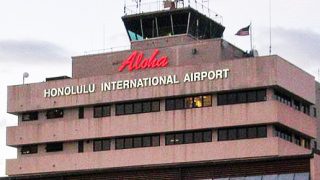The Transportation Security Administration (TSA) released updates on Thursday that covered summer travel and the security technologies in use at Honolulu Airport (HNL). These updates showed current travel activity in Hawaii and new advancements to enhance passenger convenience and security.
BOH editors transited HNL, OGG, and LIH airports multiple times this month and can report firsthand on a process running far better and faster than before. We also noted some changes, which are listed below.
Record-breaking travel volumes, but not for Hawaii.
On Sunday, July 7, 2024, TSA set a new national record by screening 3,013,413 travelers in a single day. While airports in Hawaii didn’t break any records over the July 4th weekend, they said security operations remained busy. We found that true at some airports, like Lihue, but not at others, like Maui. The TSA continues to recommend that travelers arrive early and be prepared for all steps of the travel process.
At HNL, TSA officers screened 5,010,000 departing travelers in the first half of 2024, a 4.7% increase from the same period last year. In 2023, TSA screened approximately 9,841,600 people at HNL.
Tips from TSA: The busiest times at HNL security checkpoints are generally from 10:00 a.m. to 2:00 p.m. and 5:00 p.m. to 8:00 p.m., with Thursdays through Sundays being the busiest days.


Passenger Screening Volumes at Hawaii Airports
According to TSA, high travel volumes and busy security checkpoints have become the norm. Nine of the TSA’s top ten busiest travel days nationally have occurred since mid-May.
The passenger screening volumes at Hawaii’s airports have shown varied changes. HNL experienced an increase, while some other airports, notably Maui, saw declines.
Security technologies and procedures.
Some travelers at HNL may notice new variations in security screening procedures due to the specific equipment and technologies in use. Here’s an overview of what to expect:
Credential Authentication Technology (CAT):
- No boarding pass is needed; only a photo ID is required. What we found: that is generally true, but not always. So do keep your boarding pass available.
- CAT units scan the ID and confirm the traveler’s identity and flight details without a boarding pass.
- Travelers under 18 must show a boarding pass, as they are not required to present a photo ID.
CAT-2 Units:
- Use facial recognition technology for identity verification.
- Captures real-time photos and compares them with the photo ID. What we found: you insert your driver’s license into the unit.
- Photos are not stored and are used solely for immediate identity verification.
- Travelers can opt out of the facial matching process.
Computed Tomography (CT) X-ray Scanners:
- Provide 3D images of bag contents for enhanced screening.
- Electronics and travel-size liquids can remain in carry-on bags if using a CT scanner. What we found: the TSA at HNL and other Hawaii airports has been telling us to leave everything in the carry-on bags, including electronics and liquids. That is a big relief, as it totally speeds up the scanning process.
TSA PreCheck:
- Allows travelers to leave on shoes, light jackets, and belts. What we found: Hats can also be worn.
- Children 17 and under can accompany a PreCheck-eligible parent or guardian.
Final Travel Tips.
To ensure a smooth security checkpoint experience, TSA advises:
- Arrive early and prepared. What we found: arriving early always reduces stress a lot. We needed more time at LIH because the TSA PreCheck line was longer than the regular one.
- Have photo ID and boarding pass ready.
- Follow TSA officers’ directions.
- Pack smart with easily accessible electronics and liquids.
- Use the MyTSA app or contact @AskTSA for assistance with prohibited items. What we found: before arriving, use the MyTSA app to determine how long a screening line you can expect at Hawaii airports.
Our editors continue to experience the new technologies at HNL and the other Hawaii airports firsthand and can confirm that these advancements have significantly improved the efficiency and convenience of the screening process.
Happy travels and aloha!
BOH © photo at Honolulu Airport Terminal 1, Mauka Concourse TSA.
Get Breaking Hawaii Travel News






Rather than going through the dedicated TSA precheck line, I opted to try the new TSA checkpoint installed at gate A. Either the belt scanning machine is inefficient or the x-ray techs are extremely paranoid of not catching banned items but my carry-on needed to be scanned twice since I left my laptop in the bag causing increased line delays. I noticed other precheck folks in other lines having this same issue. Perhaps those with precheck need to stay in their own dedicated checkpoint lines.
Aloha-I am a bit confused by these two statements. “These advancements have significantly improved the efficiency and convenience of the screening process” and “We needed more time at LIH because the TSA PreCheck line was longer than the regular one.”
Maybe you could explain?
thanks
Hi Jon.
Those are both true. The PreCheck line was longer than the regular one. But it did move noticeably faster than in the past. A lot of people have PreCheck.
Aloha.